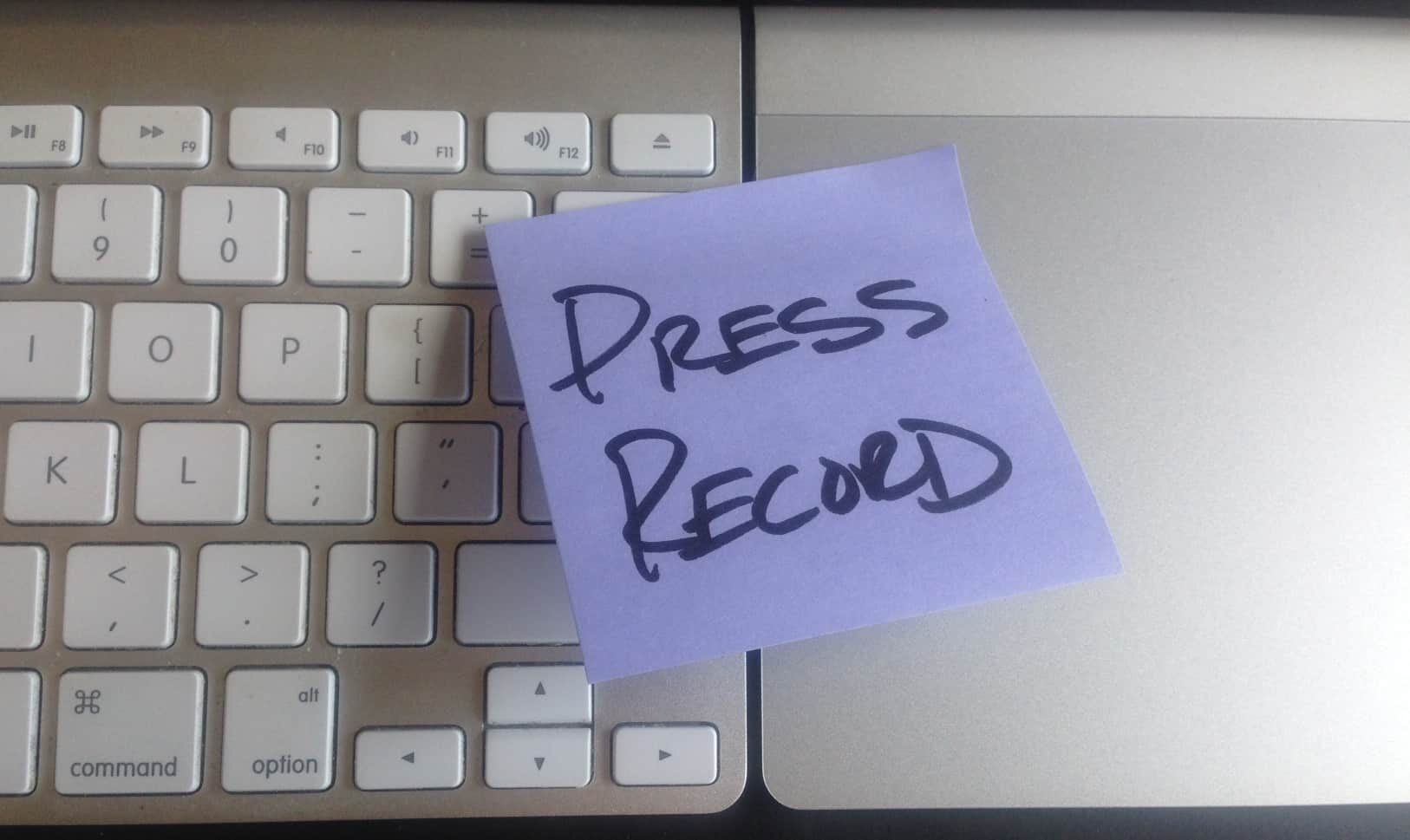For the past few years, Dr. Greg Jacobson and I have worked closely together to create and deliver our continuous improvement webinars. We try to share content that is useful to customers and others who are interested in improvement and the webinars also give us an opportunity to practice what we preach – and what we're passionate about – improvement!
Checklists
One of our baselines for improvement is our standardized work – our webinar checklist. We use this checklist to help with the planning and execution of the webinars. As with medical checklists or standardized work (in any industry), the document doesn't necessarily tell us every single thing to do. The checklist is our guide that minimizes the risk that we would forget an important step.
I almost typed “prevents us from forgetting an important step,” but I proved, in our May webinar, that checklists don't fully prevent errors — I forgot to click “Record” in the GoToWebinar panel!

That's not a mistake I had ever made before. But it happened, in part, due to me being distracted by another issue that had popped up as we were getting ready to start (a new problem involving an echo that was coming through the webinar system). It goes that show that human error is hard to prevent completely, and we serve ourselves well by minimizing distractions or any sort of chaos that would lead us to miss a step.
Our checklist gets updated and improved over time. We make changes to it after every practice session and after each webinar. If there's a step that is no longer needed, we remove that from the checklist. We'll add things to the checklist as we learn new things and as we identify risks. The checklist is meant to be a living document that changes over time. After I forgot to click “Record,” I updated the checklist to increase the font of that step and I've added a step of putting a sticky note on the keyboard as a visual reminder not to start without also starting the recording.

Suggestions vs. Ideas
After our June webinar, we got ideas and feedback from the attendees. People generally found real value in the webinar and the content, but a number of people made the same suggestion: make the slides available before the webinar, as some people want to take notes directly on them (as a printout or as a PDF on their iPad). I call this a “suggestion” because it's something that our attendees cannot implement on their own. But, Greg and I are going to make this change for our future webinars.
Workplace “ideas” (or “opportunities for improvement“) tend to be things that can be implemented by the people who have the idea. This is a key Kaizen principle, it's something that the authors of The Idea-Driven Organization talk about it, and it's something that's embedded into our KaiNexus software. Our system is not an “electronic suggestion box,” nor should organizations adopt that model where employees make suggestions that are only implemented by others.
Continuously Improving
Greg and I (and our team) are making other improvements, including doing a better job of preventing any echo during the webinars (we've identified the process / technology problem and have taken countermeasures against that happening again). We log these as OIs in our own internal KaiNexus instance that we use to track improvements (again, we practice what we preach).
Greg and I made one improvement for the June webinar that we evaluated in the PDSA cycle. Normally, Greg and I have co-presented from our own computers in our own offices — Greg in Austin and me in San Antonio. We decided to do the June webinar side by side in Austin, sharing a microphone. We didn't realize until we started, but it created an opportunity for us to be far more interactive rather than just dividing up sections of slides to cover. We got a number of comments from attendees in the post-webinar survey (we practice what we preach by listening to our customers!) about that being a positive and energizing dynamic.
Plan: Decide to try doing a webinar side by side (to prevent problems that come from trying to run slides remotely and handing things off)
Do: Do a webinar side by side
Study: Look at the impact – we liked it and the attendees liked it
Adjust: Decide to keep doing this
So, even with the cost and time required to drive to Austin, the benefits outweigh the costs.
We'll continue to look for Opportunities for Improvement. We'll continue to be driven to practice what we preach by listening to customers, updating our checklists, and getting better – a little better, each webinar.
Tweet of the Day:
What do you think? Please scroll down (or click) to post a comment. Or please share the post with your thoughts on LinkedIn – and follow me or connect with me there.
Did you like this post? Make sure you don't miss a post or podcast — Subscribe to get notified about posts via email daily or weekly.
Check out my latest book, The Mistakes That Make Us: Cultivating a Culture of Learning and Innovation:









